Abstract
Objectives--To determine the role of medical audit advisory groups in audit activities in general practice. Design--Postal questionnaire survey. Subjects--All 104 advisory groups in England and Wales in 1994. Main measures--Monitoring audit: the methods used to classify audits, the methods used by the advisory group to collect data on audits from general practices, the proportion of practices undertaking audit. Directing and coordinating audits: topics and number of practices participating in multipractice audits. Results--The response rate was 86-5%. In 1993-4, 54% of the advisory groups used the Oxfordshire or Kirklees methods for classifying audits, or modifications of them. 99% of the advisory groups collected data on audit activities at least once between 1991-2 and 1993-4. Visits, questionnaires, and other methods were used to collect information from all or samples of practices in each of the advisory group's areas. Some advisory groups used different methods in different years. In 1991-2, 57% of all practices participated in some audit, in 1992-3, 78%, and in 1993-4, 86%. 428 multipractice audits were identified. The most popular topic was diabetes. Conclusions--Advisory groups have been active in monitoring audit in general practice. However, the methods used to classify and collect information about audits in general practices varied widely. The number of practices undertaking audit increased between 1991-2 and 1993 1. The large number of multipractice audits supports the view that the advisory groups have directed and coordinated audit activities. This example of a national audit programme for general practice may be helpful in other countries in which the introduction of quality assurance is being considered.
Full text
PDF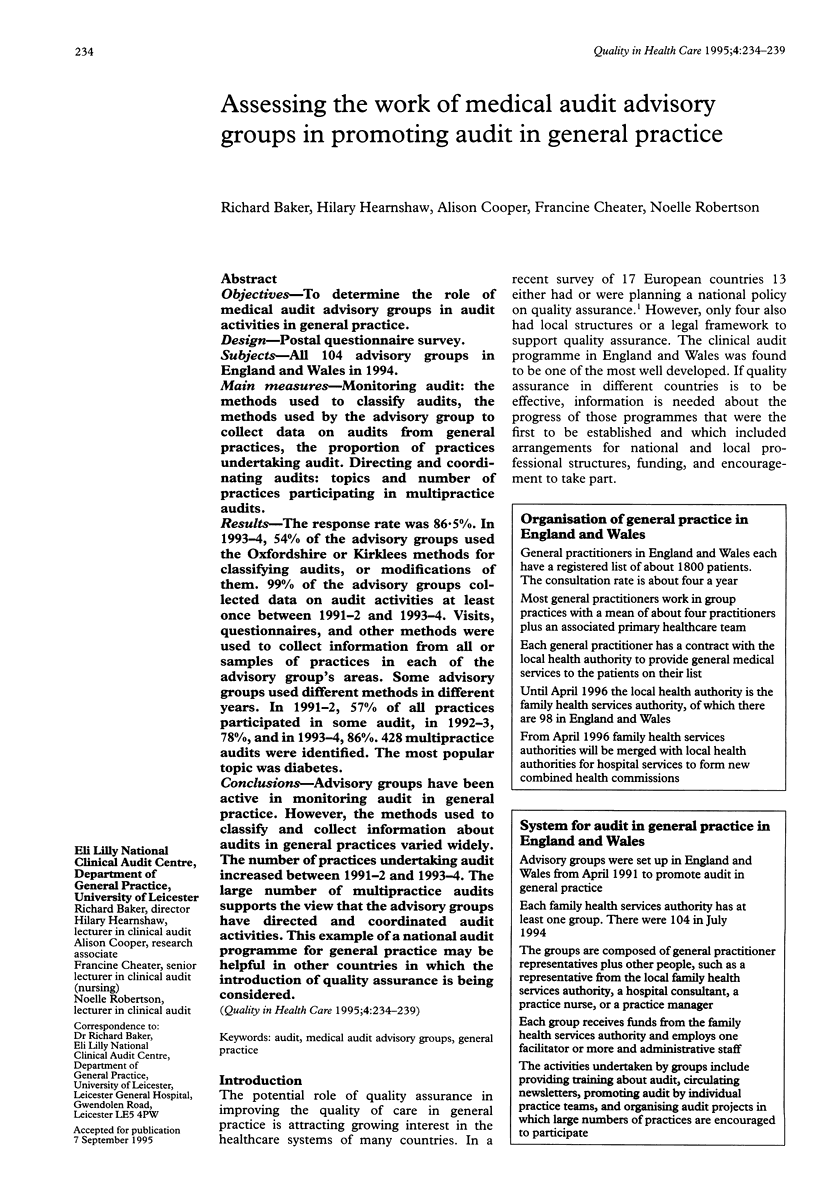
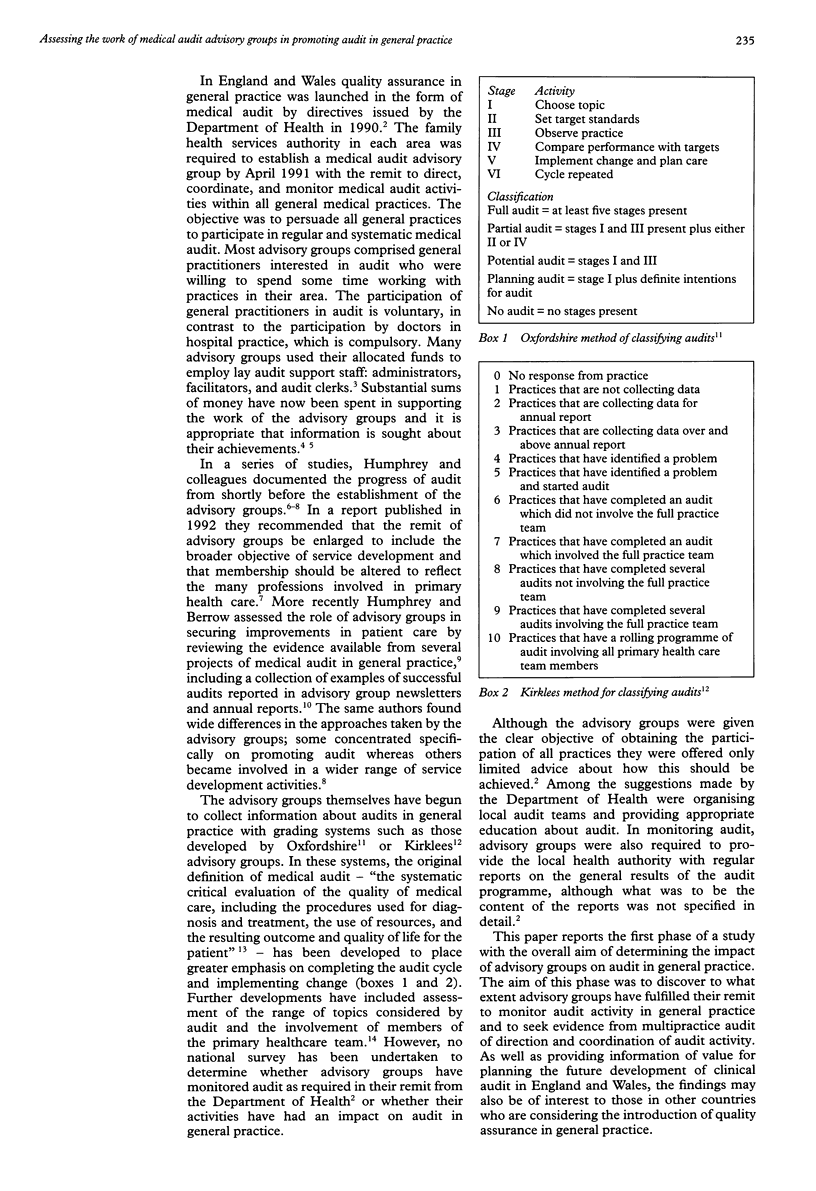
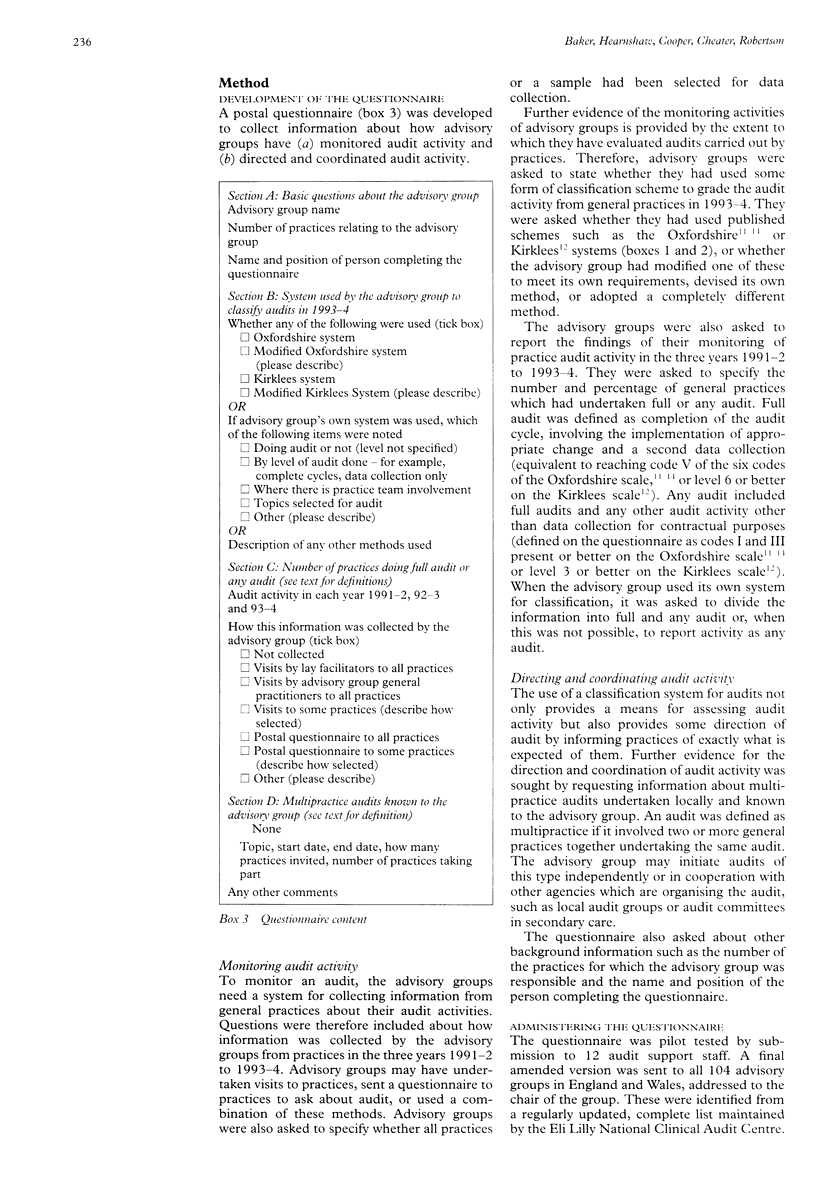

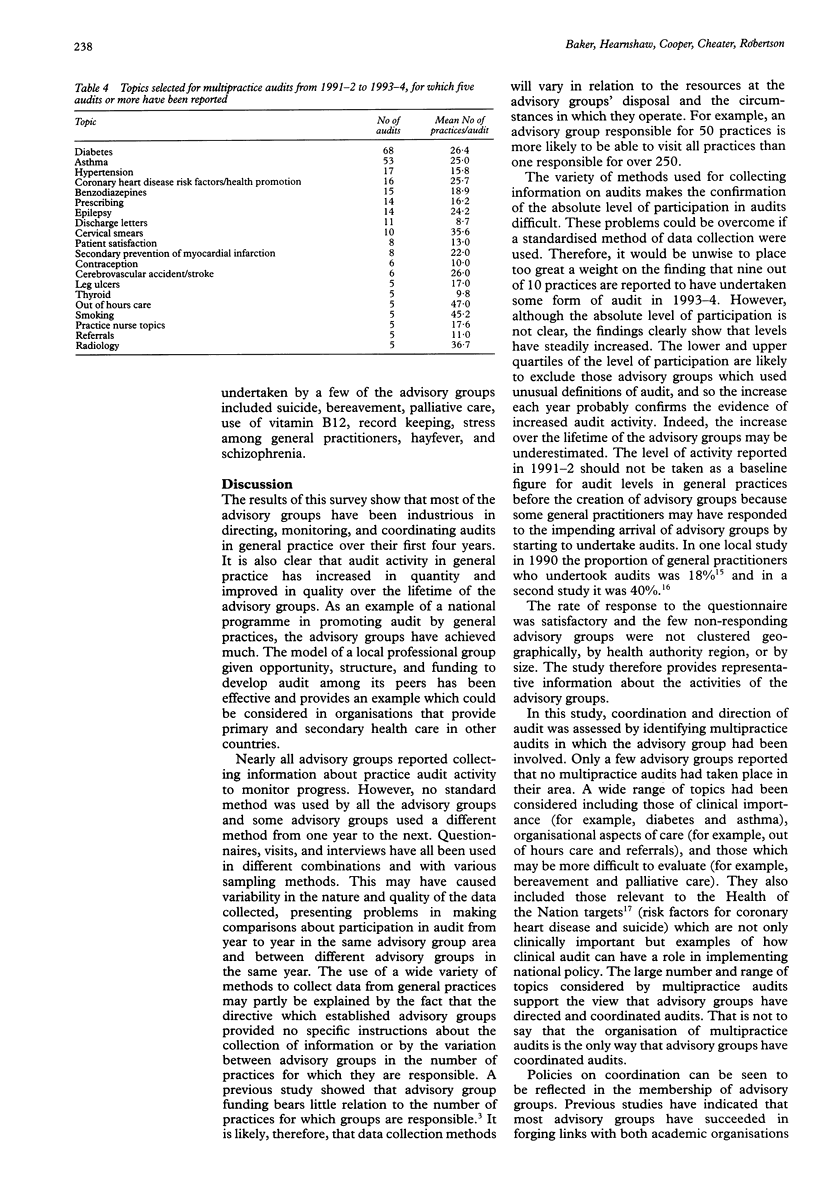
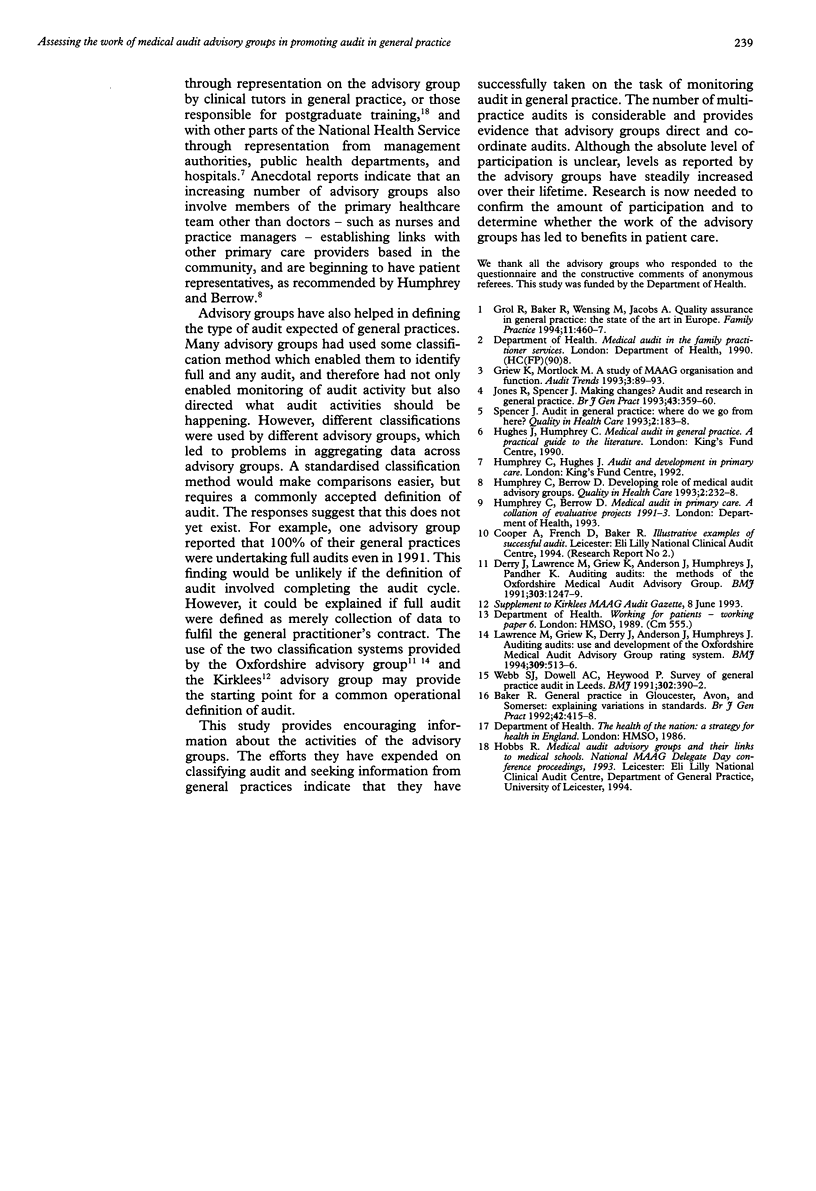
Selected References
These references are in PubMed. This may not be the complete list of references from this article.
- Baker R. General practice in Gloucestershire, Avon and Somerset: explaining variations in standards. Br J Gen Pract. 1992 Oct;42(363):415–418. [PMC free article] [PubMed] [Google Scholar]
- Derry J., Lawrence M., Griew K., Anderson J., Humphreys J., Pandher K. S. Auditing audits: the method of Oxfordshire Medical Audit Advisory Group. BMJ. 1991 Nov 16;303(6812):1247–1249. doi: 10.1136/bmj.303.6812.1247. [DOI] [PMC free article] [PubMed] [Google Scholar]
- Grol R., Baker R., Wensing M., Jacobs A. Quality assurance in general practice: the state of the art in Europe. Fam Pract. 1994 Dec;11(4):460–467. doi: 10.1093/fampra/11.4.460. [DOI] [PubMed] [Google Scholar]
- Humphrey C., Berrow D. Developing role of medical audit advisory groups. Qual Health Care. 1993 Dec;2(4):232–238. doi: 10.1136/qshc.2.4.232. [DOI] [PMC free article] [PubMed] [Google Scholar]
- Jones R., Spencer J. Making changes? Audit and research in general practice. Br J Gen Pract. 1993 Sep;43(374):359–360. [PMC free article] [PubMed] [Google Scholar]
- Lawrence M., Griew K., Derry J., Anderson J., Humphreys J. Auditing audits: use and development of the Oxfordshire Medical Audit Advisory Group rating system. BMJ. 1994 Aug 20;309(6953):513–516. doi: 10.1136/bmj.309.6953.513. [DOI] [PMC free article] [PubMed] [Google Scholar]
- Spencer J. Audit in general practice: where do we go from here? Qual Health Care. 1993 Sep;2(3):183–188. doi: 10.1136/qshc.2.3.183. [DOI] [PMC free article] [PubMed] [Google Scholar]
- Webb S. J., Dowell A. C., Heywood P. Survey of general practice audit in Leeds. BMJ. 1991 Feb 16;302(6773):390–392. doi: 10.1136/bmj.302.6773.390. [DOI] [PMC free article] [PubMed] [Google Scholar]


